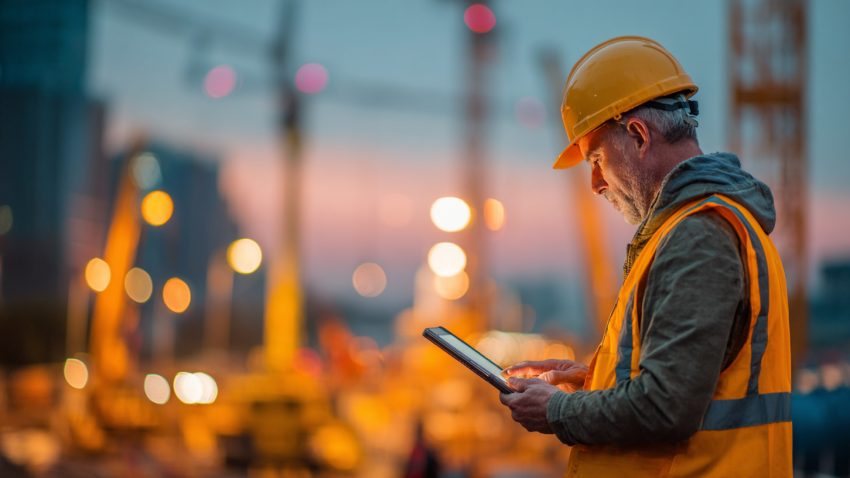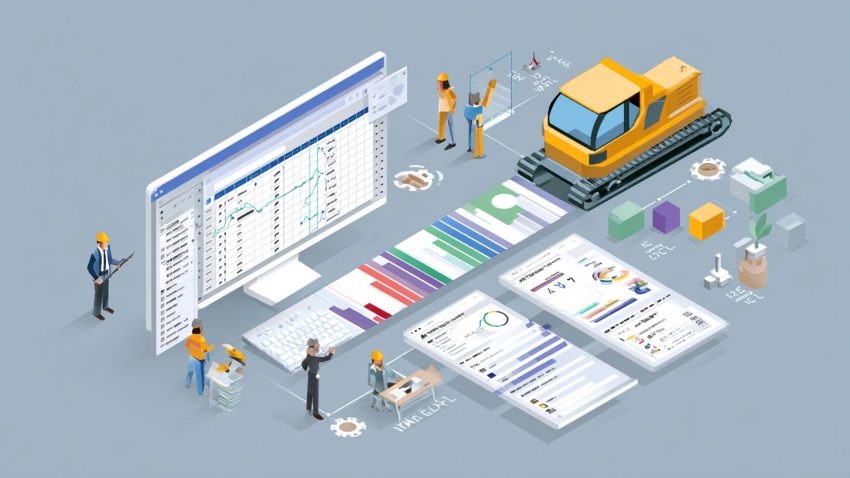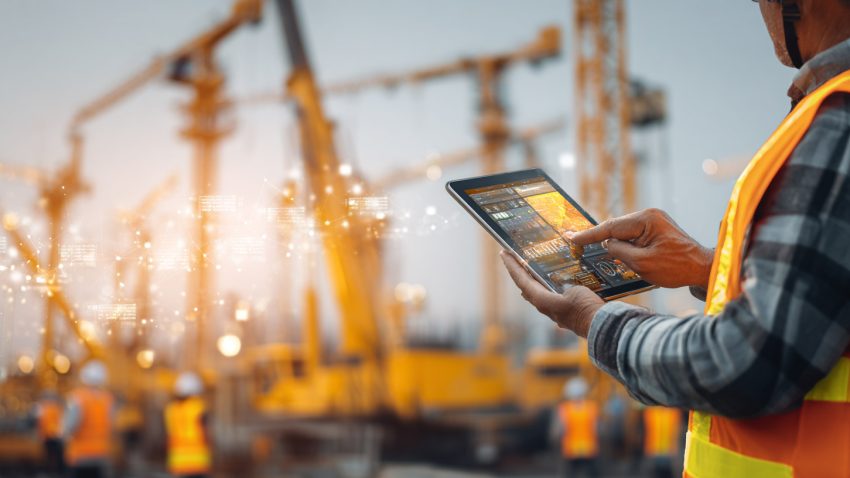Drones for Construction: What Are the Top 7 Regulatory Requirements for Using Drones on Construction Sites?
Table of Contents:
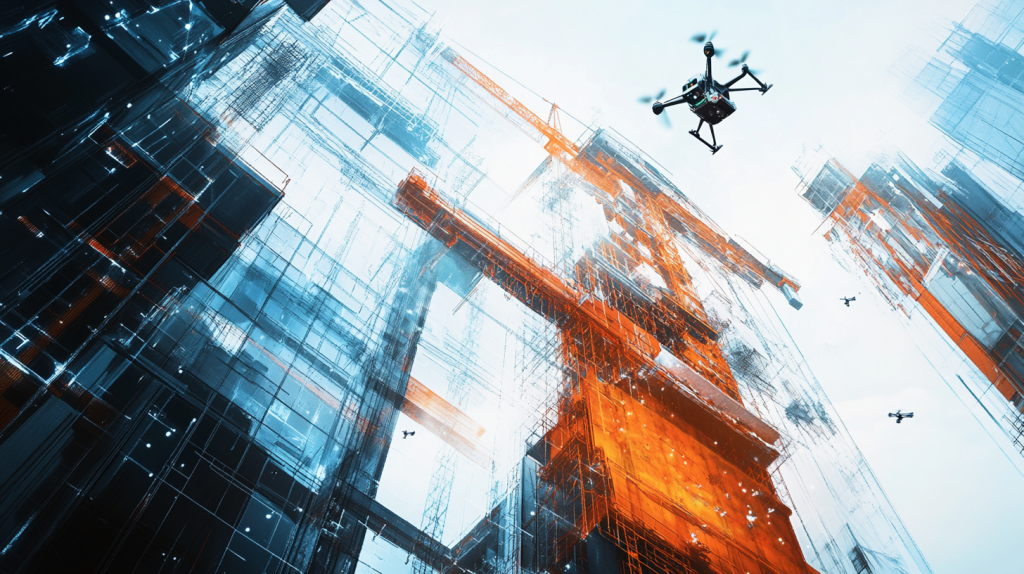
The rise of drones in construction has transformed site management, safety protocols, and operational efficiency. However, their integration into construction workflows comes with regulatory requirements that must be carefully followed. Construction companies and drone operators must navigate legal frameworks, safety protocols, and compliance standards to ensure lawful and effective drone operations.
Understanding these regulations isn’t just about avoiding fines—it’s about ensuring worker safety, public trust, and seamless operations. From obtaining the right certifications to complying with airspace restrictions, adhering to these requirements is essential for leveraging drone technology responsibly.
In this guide, we’ll explore the top 7 regulatory requirements for using drones on construction sites, breaking down each requirement with actionable insights, key benefits, and best practices to help your team stay compliant and efficient.
1. Operator Certification and Licensing
Operating drones on construction sites requires certified and licensed drone pilots. In the United States, this certification falls under the FAA Part 107 Remote Pilot Certificate. This ensures that drone operators understand airspace regulations, weather factors, emergency procedures, and safe drone handling techniques.
Certification typically involves passing an FAA-approved knowledge test that covers topics like controlled and uncontrolled airspace, altitude restrictions, and visual line-of-sight (VLOS) operations. Certified operators are also required to stay updated with evolving drone regulations and undergo periodic recertification.
Failing to operate drones without proper certification can result in hefty fines, legal disputes, and operational delays. More importantly, it risks safety lapses that could endanger workers and the public.
Key Benefits
- Operational Legitimacy: Ensures compliance with aviation authorities.
- Improved Safety Standards: Certified operators minimize risks from pilot errors.
- Legal Protection: Prevents fines and legal complications related to unauthorized drone use.
Best Practices
- Ensure All Operators Are Certified: Verify FAA Part 107 certifications for drone pilots.
- Provide Ongoing Training: Offer refresher courses to keep operators updated.
- Maintain Certification Records: Keep copies of licenses and certifications on file.
Operator certification is the foundation of drone compliance. By ensuring your pilots are licensed and well-trained, construction firms can operate drones confidently and within the law.

2. Drone Registration with Aviation Authorities
All commercial drones weighing over 0.55 pounds (250 grams) must be registered with the Federal Aviation Administration (FAA) in the United States. Each registered drone receives a unique registration number, which must be visibly displayed on the drone during operations.
Registration isn’t just a formality—it helps track drone usage, prevent misuse, and ensure accountability. It also allows aviation authorities to monitor drone activity in controlled airspace, reducing the risk of aerial accidents or unauthorized flights.
Failure to register drones can result in significant fines and potential legal action. Additionally, it may void insurance coverage, leaving companies financially exposed in the event of accidents.
Key Benefits
- Accountability and Traceability: Ensures every drone is trackable by authorities.
- Operational Transparency: Reduces the risk of unauthorized flights.
- Regulatory Compliance: Prevents fines and legal repercussions.
Best Practices
- Register Drones Before Deployment: Ensure all drones are registered with the FAA.
- Display Registration Numbers Clearly: Place them on an external, visible surface.
- Keep Records Updated: Renew registrations as required by law.
Drone registration ensures compliance, accountability, and safety in construction site operations. It’s a non-negotiable requirement for legal drone usage.
3. Airspace Authorization and Flight Restrictions
Airspace management is one of the most critical aspects of drone operations on construction sites. Drones are subject to airspace classifications and flight restrictions, especially near airports, military zones, and densely populated urban areas.
Operators must use tools like B4UFLY or AirMap to check real-time airspace maps and identify restricted zones. In controlled airspace, operators may need to apply for special authorization from the FAA or local aviation authorities before flying drones.
Ignoring airspace restrictions can lead to severe legal consequences and safety hazards, such as mid-air collisions or disruptions to manned aircraft operations.
Key Benefits
- Improved Safety: Prevents interference with manned aircraft.
- Legal Compliance: Avoids penalties for unauthorized flights.
- Predictable Operations: Ensures drones operate within safe and authorized zones.
Best Practices
- Use Airspace Mapping Tools: Check airspace status before every flight.
- Apply for Authorizations Early: Submit requests for controlled airspace access in advance.
- Establish No-Fly Zones on Site: Mark restricted areas clearly on-site maps.
Airspace authorization is vital for safe and compliant drone operations. Proactively managing airspace restrictions helps avoid accidents and legal complications.
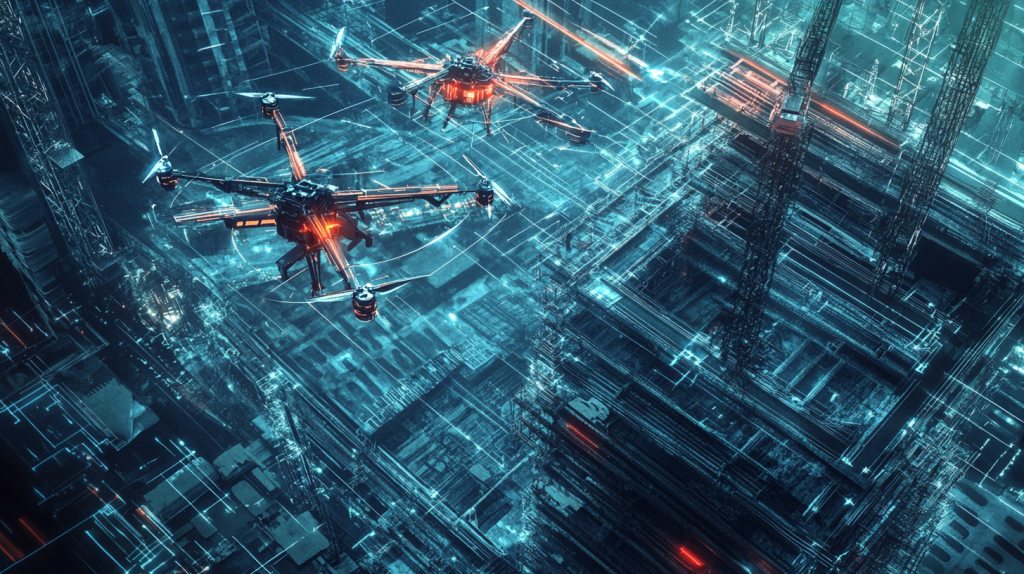
4. Maintaining Visual Line of Sight (VLOS)
Visual Line of Sight (VLOS) is a fundamental requirement for drone operations. Operators must always maintain a clear, unobstructed view of their drones without relying solely on video feeds or telemetry data.
The VLOS rule ensures that operators can react quickly to unexpected obstacles, prevent collisions, and maintain control of their drones at all times. Flying beyond the operator’s line of sight typically requires a waiver from aviation authorities, which is rarely granted for standard construction operations.
Ignoring VLOS rules increases the risk of accidents, lost drones, and regulatory penalties.
Key Benefits
- Enhanced Safety: Operators can react to unforeseen hazards.
- Improved Control: Manual adjustments are easier with visual oversight.
- Compliance with Regulations: Meets FAA and other aviation authority requirements.
Best Practices
- Use Observers for Larger Sites: Designate additional spotters for extended operations.
- Avoid Obstructions: Choose clear, open areas for drone flights.
- Limit Altitude and Distance: Stay within operator visibility thresholds.
Maintaining VLOS is a critical safety requirement. Adhering to this rule ensures safer operations and prevents costly regulatory penalties.
Related Articles:
Top 10 Applications of Drones in Commercial Construction
Drones in Construction: Top Ways They Enhance Safety and Minimize Risks
Best Guide to Construction Management Software
5. Data Privacy and Security Compliance
As drones become integral to construction operations, data privacy and security compliance have emerged as critical concerns. Drones collect vast amounts of data, including high-resolution images, videos, and 3D maps, often capturing information beyond the construction site boundaries. This creates the potential for privacy breaches if data is mishandled, stored improperly, or accessed by unauthorized parties.
Compliance with local data protection laws, such as GDPR (General Data Protection Regulation) in Europe or CCPA (California Consumer Privacy Act) in the United States, is essential. Construction companies must ensure that drone data is encrypted, securely stored, and only accessible to authorized personnel. Unauthorized sharing or storage of drone data could lead to significant fines, reputational damage, and legal consequences.
Additionally, construction managers must clearly communicate drone usage to nearby residents or neighboring property owners if their privacy could be affected. Transparent policies regarding data collection, storage, and use build trust and reduce the risk of disputes or complaints.
Key Benefits
- Improved Data Security: Protect sensitive information with encryption and secure storage.
- Regulatory Compliance: Adhere to regional data protection laws to avoid fines.
- Enhanced Public Trust: Transparency in drone operations reduces privacy concerns.
Best Practices
- Implement Data Encryption: Secure drone data during transmission and storage.
- Use Trusted Cloud Platforms: Store data on platforms with high-security standards.
- Communicate with Stakeholders: Inform stakeholders about drone data usage and privacy measures.
Ensuring data privacy and security compliance is non-negotiable in drone operations. Proactively addressing privacy concerns and adhering to regulations will prevent legal issues and maintain public trust.

6. Pre-Flight and Post-Flight Inspections
Regular pre-flight and post-flight inspections are essential for ensuring safe and reliable drone operations on construction sites. Before every flight, operators must conduct a thorough inspection to check drone components, including batteries, propellers, cameras, and sensors. Any sign of damage, wear, or malfunction must be addressed before deployment.
Pre-flight protocols also involve checking weather conditions, airspace restrictions, and flight paths. Operators must ensure the drone has enough battery life to complete the intended operation and safely return to base.
Equally important are post-flight inspections. After completing a flight, operators should examine the drone for physical damage, review captured data, and ensure all systems are functioning correctly. Regular maintenance schedules must also be in place to prevent technical failures during critical operations.
Key Benefits
- Reduced Technical Failures: Early detection of hardware issues prevents mid-flight problems.
- Improved Safety Standards: Ensures drones are flight-ready before every deployment.
- Consistent Data Quality: Reliable equipment captures accurate, usable data.
Best Practices
- Use a Pre-Flight Checklist: Follow a standardized inspection list before every flight.
- Document Inspections: Keep records of inspection results for accountability.
- Schedule Routine Maintenance: Preventive maintenance extends drone lifespan.
Pre-flight and post-flight inspections are vital for safe and effective drone operations. They minimize the risk of equipment failure, improve flight outcomes, and ensure compliance with operational safety standards.

StruxHub
Experience the power of StruxHub today and witness firsthand how it can revolutionize your construction operations.
7. Emergency Response and Incident Reporting
No matter how well-planned drone operations are, emergencies and accidents can still occur. From sudden weather changes to hardware malfunctions or mid-flight collisions, construction teams must be prepared to handle drone-related incidents efficiently.
Every construction project should have a drone emergency response plan. This plan must outline procedures for scenarios such as drone crashes, equipment failure, loss of communication, or unauthorized access to drone controls. Operators should be trained to land drones safely during emergencies and secure the equipment to prevent further damage or data loss.
Additionally, incident reporting protocols must be in place. Any drone-related accident, near-miss, or equipment malfunction should be thoroughly documented, analyzed, and reported to relevant authorities if required. These reports provide valuable insights into preventing similar incidents in the future.
Key Benefits
- Rapid Incident Response: Minimize damage through quick, coordinated action.
- Clear Accountability: Incident reports clarify responsibilities and causes.
- Improved Safety Standards: Lessons from incidents drive continuous improvement.
Best Practices
- Create an Emergency Plan: Establish clear protocols for drone-related incidents.
- Train Operators for Emergencies: Ensure all operators know emergency procedures.
- Document and Analyze Incidents: Use post-incident analysis to improve safety protocols.
Having a robust emergency response and incident reporting framework is essential for responsible drone operations. Being prepared for the unexpected ensures quick resolution and minimizes risks.
Related Articles:
Unlock the Full Potential of Your Construction Projects with StruxHub
StruxHub enhances efficiency and coordination across all project phases, providing a single source of truth that eliminates silos and fosters collaboration. Real-time updates, financial management tools, and seamless commvunication features ensure that all team members and stakeholders are aligned and informed, reducing the risk of errors and delays. With comprehensive solutions for document management, risk mitigation, and quality control, StruxHub maintains project integrity and safety, while mobile access and integration capabilities further enhance project flexibility and efficiency.
StruxHub’s Key Features and Benefits:
- Advanced Delivery Management: Automate and optimize your delivery schedules, ensuring materials arrive just in time, every time.
- Site Communication: Utilize georeferenced maps and instant messaging to keep every team member informed and aligned.
- Construction Materials Management: Track inventory levels and manage materials procurement with ease, reducing waste and avoiding project delays.
- Construction Safety & Inspection Workflows: Implement customizable mobile forms for conducting safety inspections and managing compliance documentation effortlessly.
- Short-Term Scheduling: Visualize project tasks with detailed floor plans, linking each activity to specific locations for better planning accuracy.
- Construction Resource Management: Efficiently allocate personnel and equipment, maximizing productivity and reducing idle time.
StruxHub’s Product Offering:
- StruxHub Deliveries: Simplifies the coordination of incoming deliveries, ensuring materials and equipment are precisely timed to project needs.
- StruxHub Logistics: Offers intelligent site logistics planning, from crane scheduling to space allocation, for smoother operations.
- StruxHub Safety: Elevates on-site safety standards with easy-to-use tools for inspections, permits, and incident reporting.
- StruxHub Scheduling: Enhances project timelines with intuitive scheduling tools that ensure tasks are completed efficiently and on time.
With StruxHub, construction companies can look forward to a streamlined, more efficient project execution that delivers on time and within budget. Embrace the power of innovation and take your construction projects to the next level.
Don’t miss out on the opportunity to optimize your construction management processes with StruxHub. Sign up for a free demo today. Let’s build smarter, together.
FAQ
What certifications are required for drone pilots in construction?
Operating drones on construction sites necessitates adherence to specific regulatory standards to ensure safety and compliance. In the United States, the Federal Aviation Administration (FAA) mandates that individuals flying drones for commercial purposes, including construction, obtain the Part 107 Remote Pilot Certificate. This certification process involves passing a comprehensive aeronautical knowledge test that covers various topics such as airspace classifications, flight restrictions, weather phenomena, and emergency procedures. The objective is to ensure that drone operators possess the necessary knowledge to conduct flights safely within the national airspace system.
Beyond the initial certification, the FAA requires remote pilots to undergo recurrent training every 24 months to stay updated on evolving regulations and operational best practices. This continuous education is crucial, given the rapid advancements in drone technology and the dynamic nature of aviation regulations. Additionally, operators must register their drones with the FAA and ensure that the registration number is visibly displayed on the aircraft. Maintaining detailed records of each flight, including purpose, duration, and any anomalies encountered, is also recommended to demonstrate compliance during inspections or audits.
For construction companies operating internationally, it’s imperative to recognize that certification requirements can vary by country. For instance, in the European Union, drone operations are governed by the European Union Aviation Safety Agency (EASA), which has its own set of regulations and certification processes. Therefore, understanding and complying with local aviation laws is essential to ensure lawful operations across different jurisdictions.
Incorporating certified drone pilots into construction projects not only ensures regulatory compliance but also enhances operational efficiency and safety. Platforms like StruxHub can assist in managing and verifying pilot certifications, streamlining the integration of drone operations into construction workflows. By leveraging such tools, construction managers can maintain an organized record of pilot credentials, ensuring that only qualified personnel are assigned to drone-related tasks.
In summary, obtaining the necessary certifications, adhering to regulatory requirements, and engaging in continuous education are fundamental for drone pilots in the construction industry. These measures ensure safe, legal, and efficient drone operations, contributing to the overall success of construction projects.
How do construction companies handle drone data privacy?
The integration of drones into construction operations has significantly enhanced data collection capabilities, enabling detailed site surveys, progress monitoring, and resource management. However, this advancement brings forth critical concerns regarding data privacy and security. Construction companies must implement robust measures to protect the sensitive information captured by drones, ensuring compliance with data protection regulations and maintaining stakeholder trust.
Firstly, companies should establish comprehensive data governance policies that define the collection, storage, access, and sharing protocols for drone-acquired data. Implementing data encryption both in transit and at rest is essential to safeguard against unauthorized access. Utilizing secure cloud storage solutions with stringent access controls further ensures that only authorized personnel can retrieve and manage the data. Regular audits and monitoring of data access logs can help detect and prevent potential breaches.
Compliance with regional data protection laws is another critical aspect. For instance, companies operating within the European Union must adhere to the General Data Protection Regulation (GDPR), which mandates strict guidelines on personal data processing. Similarly, in the United States, the California Consumer Privacy Act (CCPA) imposes obligations on businesses regarding consumer data privacy. Non-compliance with these regulations can result in substantial fines and legal repercussions.
To address these challenges, construction firms can leverage platforms like StruxHub, which offer integrated solutions for managing drone data securely. StruxHub provides features that facilitate secure data storage, controlled access, and seamless integration with existing project management workflows. By utilizing such platforms, companies can ensure that drone data is handled in compliance with privacy regulations while enhancing operational efficiency.
Furthermore, transparency with stakeholders, including clients, employees, and the public, is vital. Clearly communicating the purpose of data collection, the types of data gathered, and the measures in place to protect privacy can build trust and mitigate concerns. Obtaining explicit consent when capturing data that may include personal information is not only a legal requirement in many jurisdictions but also a best practice in ethical data management.
In conclusion, as drones become increasingly prevalent in construction, addressing data privacy concerns through robust governance policies, compliance with legal standards, utilization of secure management platforms, and transparent communication is imperative. These measures ensure that the benefits of drone technology are realized without compromising the privacy and security of sensitive information.
Are there restrictions on flying drones at night on construction sites?
Operating drones at night on construction sites introduces additional complexities and regulatory considerations compared to daytime flights. In the United States, the Federal Aviation Administration (FAA) governs such operations under Part 107 regulations. As of April 2021, the FAA permits routine night operations for Part 107 certificate holders, provided specific conditions are met to ensure safety.
One of the primary requirements is the installation of anti-collision lighting on the drone, visible for at least three statute miles. This lighting enhances the drone’s visibility to the operator and other airspace users, reducing the risk of mid-air collisions. Additionally, operators must complete updated initial or recurrent training that includes night operation topics, ensuring they are equipped to handle the unique challenges posed by low-light conditions.
Beyond regulatory compliance, practical considerations are crucial for safe night-time drone operations. Reduced visibility can impair depth perception and obstacle detection, necessitating the use of advanced technologies such as thermal imaging cameras or LiDAR systems to enhance situational awareness.
Are there restrictions on flying drones at night on construction sites?
Operating drones at night on construction sites introduces additional complexities and regulatory considerations compared to daytime flights. In the United States, the Federal Aviation Administration (FAA) governs such operations under Part 107 regulations. As of April 2021, the FAA permits routine night operations for Part 107 certificate holders, provided specific conditions are met to ensure safety and compliance.
One of the primary requirements is the installation of anti-collision lighting on the drone, which must be visible from at least three statute miles. This lighting ensures that the drone remains visible to both the operator and other aircraft operating in the vicinity, reducing the risk of mid-air collisions. Additionally, drone pilots must complete night flight training, which covers critical topics like night illusions, lighting requirements, and proper pre-flight preparations for nighttime conditions.
Operating drones at night also poses unique challenges such as reduced depth perception, limited visibility, and higher chances of encountering unexpected obstacles. To address these challenges, many operators equip their drones with thermal imaging cameras or LiDAR sensors. These technologies allow drones to “see” in the dark by detecting heat signatures and creating detailed environmental maps, making nighttime operations significantly safer.
From a practical standpoint, night flights should be carefully planned with clear objectives, predefined flight paths, and contingency measures in case of emergencies. Site managers should ensure adequate lighting for take-off, landing, and drone monitoring. A dedicated observer can also assist the pilot by keeping an eye on the drone’s surroundings, helping identify potential risks in real-time.
When operating drones at night, construction companies must also comply with local airspace restrictions and obtain additional permits if required. For example, some regions may have specific no-fly zones or curfews for drone operations. Tools like B4UFLY or AirMap can provide up-to-date information about these restrictions, helping operators plan compliant flights.
Platforms like StruxHub can streamline drone operations by integrating data from night flights into project workflows, ensuring safety records are well-documented and compliance is maintained. These tools also allow stakeholders to review drone footage, analyze nighttime survey results, and make informed decisions.
In conclusion, nighttime drone operations on construction sites are both valuable and viable, but they require careful adherence to FAA regulations, thorough planning, and the use of specialized equipment. When executed properly, nighttime drone flights can provide critical insights and maintain project continuity around the clock.
What happens if a drone enters restricted airspace accidentally?
Accidental entry into restricted airspace is one of the most serious risks associated with drone operations on construction sites. Restricted zones, including areas near airports, military bases, or government facilities, are closely monitored, and unauthorized drone activity in these areas can result in severe penalties, including fines, suspension of licenses, or criminal charges.
The first step in such a scenario is for the drone operator to immediately regain control of the drone and safely exit the restricted airspace. Many drones come equipped with geofencing technology, which prevents them from entering restricted zones in the first place. However, if geofencing fails or isn’t enabled, quick action by the operator is essential.
Once the drone is safely removed from restricted airspace, the operator must report the incident to the appropriate authorities—in the United States, this typically means notifying the FAA. Providing accurate details, including the time, location, altitude, and reasons for the incursion, is crucial for a transparent resolution.
To prevent future incidents, operators should conduct a thorough post-incident analysis to identify the root cause of the breach. Was it due to pilot error, poor planning, software failure, or unforeseen weather conditions? Understanding the cause helps construction teams refine their flight protocols and improve safety measures.
Additionally, construction companies should leverage tools like AirMap or B4UFLY to plan drone flights and identify restricted zones beforehand. These tools provide real-time airspace information, allowing operators to map out safe and compliant flight paths.
Integrating flight logs and safety audits into construction management platforms like StruxHub can also help teams monitor compliance and avoid repeated violations. These platforms can flag potential risks during flight planning and provide automated alerts for nearby restricted zones.
Lastly, ongoing training for drone operators is essential to reduce the risk of accidental breaches. Certified pilots should be familiar with airspace classifications, temporary flight restrictions (TFRs), and the consequences of non-compliance.
In summary, if a drone enters restricted airspace accidentally, operators must act quickly to regain control, report the incident, and conduct a thorough analysis to prevent recurrence. With the right tools, training, and protocols, such incidents can be minimized significantly.
What should be included in a drone safety checklist?
A drone safety checklist is a critical tool for ensuring that every drone flight on a construction site is safe, compliant, and efficient. This checklist acts as a step-by-step guide for operators to verify the readiness of both the equipment and the operating environment before, during, and after flights.
Pre-Flight Checklist:
- Battery Levels: Ensure both drone and controller batteries are fully charged.
- Propeller Inspection: Check for cracks, chips, or loose fittings.
- Camera Calibration: Verify that cameras and sensors are functioning correctly.
- Weather Conditions: Confirm favorable weather with no high winds, rain, or poor visibility.
- Airspace Restrictions: Use tools like B4UFLY to confirm compliance.
- Flight Plan Review: Map out flight paths and operational objectives.
During Flight Checklist:
- Maintain VLOS (Visual Line of Sight): Keep the drone in sight at all times.
- Monitor Battery Levels: Track battery status throughout the flight.
- Watch for Obstacles: Be vigilant about power lines, cranes, or other aerial obstructions.
Post-Flight Checklist:
- Inspect the Drone: Check for signs of damage.
- Review Captured Data: Ensure data was successfully collected and stored securely.
- Log the Flight: Record details like flight time, purpose, and any incidents.
Using platforms like StruxHub can streamline these checklists digitally, ensuring every step is accounted for, documented, and accessible to project managers and auditors.
Consistency is key when using a drone safety checklist. By ensuring each step is meticulously followed, construction teams can reduce operational risks, improve data quality, and maintain compliance with regulatory requirements.In conclusion, a well-structured drone safety checklist is indispensable for safe and efficient drone operations on construction sites. It not only minimizes risks but also ensures transparency, accountability, and regulatory compliance across every flight.


